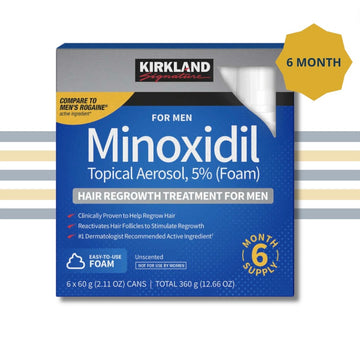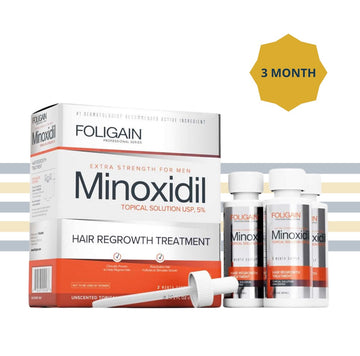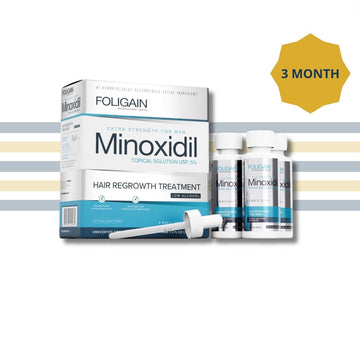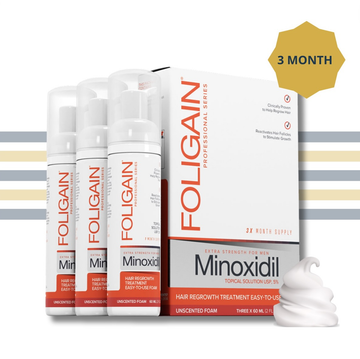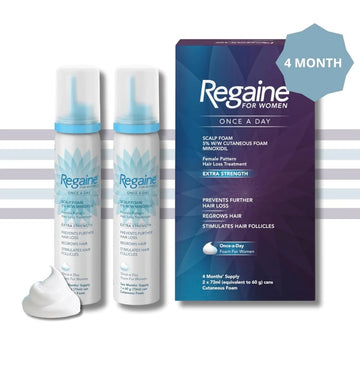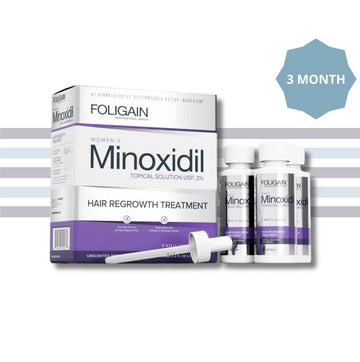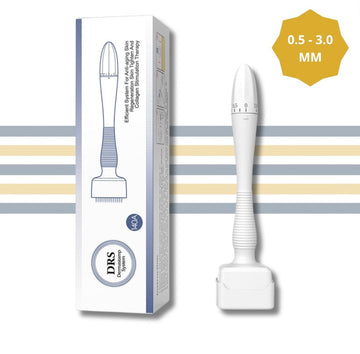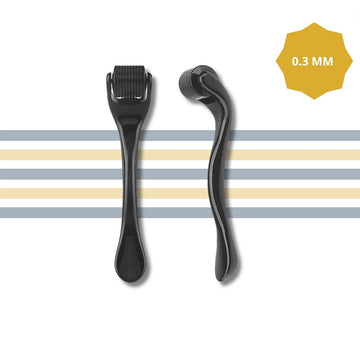How can you recognize imitation Kirkland?
At Minodeals we are committed to offering only original products. We are aware of the challenges that consumers are confronted with distinguishing real and fake Kirkland, mainly because of the changes in packaging over the years. This guide is meant to help you verify the authenticity of your Kirkland product.
1. Packaging & Design
Kirkland recently implemented a change in the design of the package for both the lotion and the foam. Both products have now been given a new appearance, and the old variant is no longer produced.
NB: If you come across web shops that offer the old variant with a long best -before date, you can assume that it is counterfeit products. The original old variants have been out of production for some time, so that their expiry date will soon be or has already expired.

2. Physical properties
To make sure you buy an authentic Kirkland product, you can pay attention to some physical properties of the lotion:
- Package
Authentic Kirkland lotion is not supplied with a seal. If you open the cap, you can immediately see the liquid in the bottle. This is a standard characteristic of original Kirkland products.
- Color and texture
Authentic product: The liquid has a subtle yellowish hue and an oily consistency. These properties are characteristic of the original formula.
Counterfeit: Counterfeit products can differ greatly in color and texture. Some counterfeits have a strikingly darker, almost bright yellow liquid, while others are clear and watery, without the characteristic yellow hue of the original product.
- Fragrance
Authentic product: The scent of Kirkland lotion is alcoholic, similar to the scent of vodka. This scent is strong and lingers.
Counterfeit: Counterfeit products sometimes also have an alcoholic scent, but this is often lighter, fresher and less intense, making it easier to breathe.
3. Crystallization
One of the most striking features of the original Kirkland lotion is the ability to crystallize when drying up. This unique characteristic is noticeable on the skin and outside the skin, such as on the edge of the bottle or the cap.
When the original Kirkland lotion dries up after applying to the skin, it gradually starts to crystallize. This results in a slightly crusty texture in the area where it was applied. This crystallization process is a natural reaction of the ingredients in the lotion, in particular the alcohol base, when it comes into contact with air and starts to evaporate.
The same crystallization also occurs when small drops of the lotion dry outside the skin, such as on the inside of the bottle cap. After a while, these drops will harden and form a crystal -like texture. This is a good sign of the authenticity of the product. If your lotion does not crystallize after drying, both on the skin and outside the skin, this may indicate a non-authentic product.
It is important to note that the crystallization process can take some time and depend on the ambient temperature and humidity. If the product does not crystallize immediately, this does not necessarily mean that it is fake. However, if no crystallization occurs after a longer period, this is a strong sign that the product may not be real.
4. Prices and sales channels
An important aspect to consider when purchasing Kirkland is the price and the sales channel. Authentic Kirkland products are usually sold at a market price. Therefore, be extremely careful with offers that promise extremely low prices. Although it can be tempting to choose the cheapest option, it is important to realize that considerably lower prices can often be an indication of counterfeit products. These falsified products can not only be ineffective, but also entail potential health risks.
In addition to the price, the sales channel where you purchase Kirkland is of great importance. Platforms such as eBay, Marktplaats and other comparable online market places can be a breeding ground for fakes. Although these sites offer a wide range of products, the authenticity of health and beauty products that are sold there is not always guaranteed. Sellers on these platforms can easily offer fake products.
5. Bleach test
An interesting and less well -known method to test the authenticity of Kirkland is what is known as the 'Bleektest'. This test means that you mix 1 ml with an equal amount of pale. Perform this test in a safe environment, preferably in a well -ventilated room and with suitable protection, such as gloves and safety glasses.
When you mix the two liquids, observe the color change of the mixture. With authentic Kirkland, the mixture will turn into a bright yellow color. This color change is due to the chemical reaction between the active ingredients of the lotion and the components in the toilet cleaner.
However, it is important to know that some counterfeiters are aware of this test and have adjusted their fake products in such a way that they can also become bright yellow at the Bleektestest. That is why this test should not be used as the only means to determine the authenticity of Kirkland. It is advisable to use this test in combination with other methods, such as checking the packaging, texture, odor and crystallization properties.





